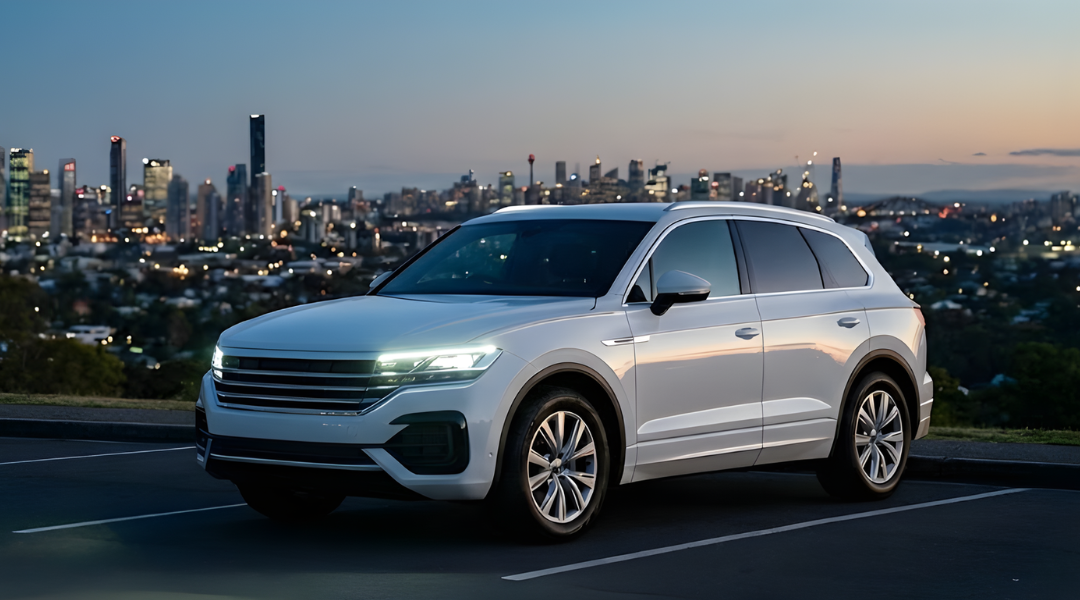Imagine a car that adapts to changing traffic conditions, gently steers you back into your lane, and maintains a safe distance from the vehicle ahead. This isn’t science fiction; it’s the reality of driver-assistance systems (ADAS). These advanced technologies are rapidly transforming the driving experience in Australia, placing a greater emphasis on safety and convenience for all road users.
Australia’s vast road network, combined with long stretches of highway, makes driver-assistance systems particularly valuable. ADAS offers a significant contribution to road safety by reducing human error, a major factor in accidents. Additionally, these systems can ease the burden of long commutes and improve overall driving comfort. For those exploring Australia’s highways, consider car hire with ADAS features to enhance your road trip experience.
1. Adaptive Cruise Control (ACC): Your Highway Co-Pilot
What is ACC?
ACC stands for Adaptive Cruise Control. It’s a technology that transforms highway driving by automating some aspects of speed control. Here’s a breakdown of its key features and benefits:
-
Maintains Safe Distance: ACC uses sensors like radar or cameras to detect the car in front of you. It then automatically adjusts your car’s speed to maintain a safe distance, reducing the risk of rear-end collisions.
-
Smoother Traffic Flow: ACC can significantly improve traffic flow, especially during congestion. Here’s why:
- Automatic Speed Adjustments: Cars with ACC automatically adjust their speed to match the car ahead, preventing the stop-and-go situations that contribute to traffic jams.
- Maintains Consistent Flow: By keeping a safe distance, ACC allows for a more consistent flow of traffic, reducing the erratic braking and accelerating that can disrupt traffic patterns.
-
Advanced Features: Some car models offer advanced ACC systems with additional functionalities:
-
Full-Speed Range: This allows ACC to function at all vehicle speeds, providing consistent support on highways and slower roads (e.g., Toyota Camry).
-
Lane Centering: This feature, like in Ford’s Intelligent Cruise Control, helps keep your car centred within its lane while maintaining distance from the car ahead.
-
Stop & Go Function: This advanced system (e.g., Mazda Radar Cruise Control) can bring your car to a complete stop in heavy traffic and resume driving automatically, offering a more relaxed driving experience.
-
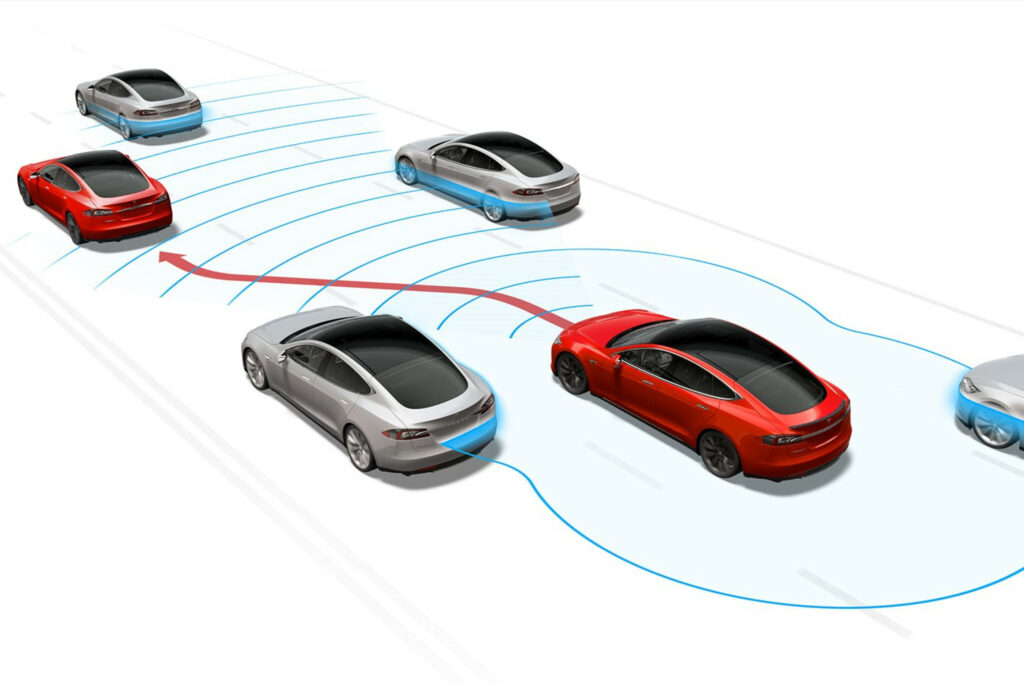
Things to Consider with ACC
While ACC offers a range of benefits, it’s important to be aware of its limitations and responsible use:
-
Not a Self-Driving System: ACC is an advanced driver-assistance system, not a replacement for human control. You should always stay alert and be prepared to intervene when necessary.
-
Sensor Limitations: The effectiveness of ACC can be impacted by weather conditions like fog, heavy rain, or snow. In such situations, it might be best to disengage ACC and manually control your speed.
-
Following Distance: ACC allows you to set your preferred following distance from the car ahead. Maintaining a safe distance is crucial, so don’t set the following distance too short for reaction time in case of sudden braking.
-
Unexpected Maneuvers: ACC might not react instantly to sudden lane changes or merging vehicles. It’s important to remain aware of your surroundings and be prepared to take manual control if needed.
Using ACC Responsibly:
Here are some tips for getting the most out of ACC while driving responsibly:
-
Read Your Owner’s Manual: Every car model with ACC might have slightly different functionalities and limitations. Familiarize yourself with your specific system’s features and operation.
-
Start on Open Highways: As you get comfortable with ACC, it’s best to use it first on open highways with predictable traffic flow.
-
Stay Alert and Focused: Even with ACC engaged, you’re still responsible for driving safely. Keep your eyes on the road, maintain situational awareness, and be prepared to take over control at any moment.
-
Don’t Rely Solely on ACC: ACC is a helpful tool, but it shouldn’t replace your own judgment. Be prepared to disengage and take manual control when necessary, especially in challenging driving conditions.
2. Lane Keeping Assist (LKA) and Lane Departure Warning (LDW)
Lane Discipline: How LKA and LDW Work
Lane Keeping Assist (LKA) and Lane Departure Warning (LDW) are technologies designed to keep you on the right track. LKA utilises cameras or sensors to detect lane markings and gently corrects your steering if you begin to drift out of your lane unintentionally. LDW, on the other hand, provides an audio or visual alert to warn you of an impending lane departure.
The Power of Lane Monitoring
Both LKA and LDW play a crucial role in preventing lane departure accidents, a common occurrence on highways due to fatigue or driver distraction. These systems act as an extra set of eyes, ensuring you stay within the designated lane for a safer and more controlled driving experience.
-
-
LKA: The Gentle Touch: This system uses cameras or sensors to detect lane markings. If you unintentionally drift, LKA gently corrects your steering to keep you within the lane boundaries.
-
LDW: The Alerting System: LDW acts as an early warning system. It triggers an audio or visual alert (like a flashing light or vibration) when you’re about to depart from your lane without using your turn signal.
-
-
Safety Benefits: Both LKA and LDW significantly improve highway safety by:
-
Reducing Lane Departure Accidents: These systems address a major cause of highway accidents – unintentional lane departures often caused by fatigue or distraction.
-
Enhanced Situational Awareness: By providing alerts or corrective measures, LKA and LDW can help drivers regain awareness and take control of the situation before it becomes critical.
-
Australian Cars with Advanced Lane Assist Technologies
The list of Australian car models with advanced lane assist systems is great!
-
Advanced Features: Car manufacturers continuously develop more sophisticated LKA and LDW systems. Some examples include:
-
Active Lane Assist: This combines visual alerts with steering intervention, as seen in the Holden Commodore.
-
Intelligent Lane Intervention: This system (like in the Nissan X-Trail) not only warns but also applies gentle steering torque to assist you in staying within your lane.
-
-
The Future of Lane Assist: As technology advances, we can expect even more features like:
-
Integration with ACC: Imagine a system that combines lane assist with Adaptive Cruise Control, allowing for a more automated and controlled highway driving experience.
-
Blind Spot Monitoring Integration: A combined system could warn you of vehicles in your blind spot while also assisting with lane changes.
-
3. Autonomous Emergency Braking (AEB)
Understanding AEB
Autonomous Emergency Braking (AEB) is a critical driver-assistance system that acts as your automatic guardian angel on the road. This technology utilizes advanced sensors like radar or cameras to monitor the traffic ahead constantly. If the system detects a potential collision with a vehicle or pedestrian in your path, it will automatically apply the brakes to avoid an accident or significantly reduce its severity. AEB reacts much faster than human reflexes, providing an extra layer of safety in critical situations.
Minimising Collisions and Saving Lives
The importance of AEB cannot be overstated. This system has the potential to significantly reduce the number of road accidents, especially those caused by following too closely or driver inattention. By automatically applying the brakes in emergencies, AEB can prevent collisions altogether or mitigate the impact, potentially saving lives and reducing injuries. With the growing emphasis on road safety in Australia, AEB is becoming an increasingly essential feature in modern vehicles.
Cars with Top-Performing AEB Systems
Many car manufacturers are now incorporating high-performing AEB systems into their Australian models. Here are a few examples:
- Subaru Forester: Features Subaru EyeSight, a suite of driver-assistance systems including AEB that has been recognized for its effectiveness in preventing collisions.
- Volkswagen Tiguan: Boasts Front Assist with City Emergency Braking, an AEB system specifically designed to function effectively in both highway and urban environments.
- Mercedes-Benz E-Class: Offers Active Distance Assist Distronic, an advanced AEB system that can even detect stationary vehicles and initiate emergency braking to avoid rear-end collisions.
4. Blind Spot Detection (BSD) and Rear Cross-Traffic Alert (RCTA)
Blind Spot Detection (BSD):
Blind Spot Detection (BSD) is a technology that acts as your extra eyes on the road. It monitors the areas alongside and slightly behind your car, zones that are difficult to see with just your side mirrors. These are known as blind spots. When BSD detects a vehicle entering your blind spot, it typically triggers a warning light on the corresponding side mirror or an audible beep to alert you of potential danger before you attempt a lane change.
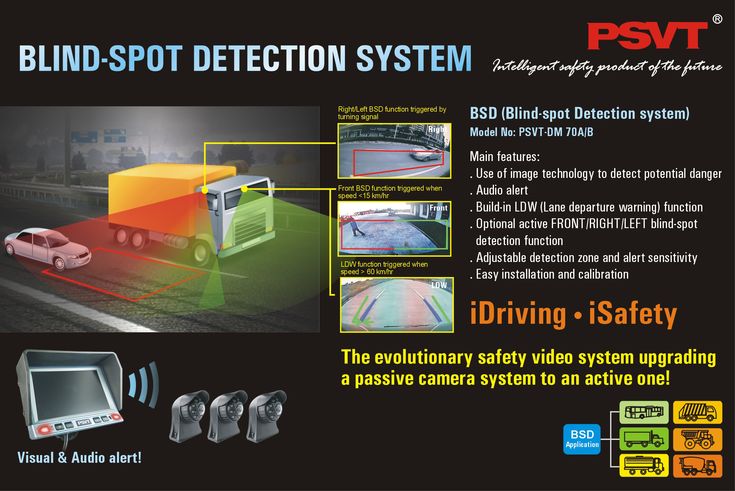
Rear Cross-Traffic Alert (RCTA)
Rear Cross-Traffic Alert (RCTA) is a valuable feature that comes to your aid specifically when reversing. Imagine you’re backing out of a parking space and can’t quite see everything behind you. RCTA uses sensors to detect vehicles approaching from either side, alerting you with a visual or audible warning to prevent potential collisions while reversing.
How BSD and RCTA Work Together
Blind Spot Detection (BSD) and Rear Cross-Traffic Alert (RCTA) are a dynamic duo of driver-assistance systems designed to eliminate hidden dangers in your driving environment. BSD utilizes radar sensors to monitor the areas behind and beside your vehicle, which are often referred to as blind spots. If a vehicle enters your blind spot, BSD will typically activate a visual alert, such as a light on your side mirror, warning you of potential danger when changing lanes. RCTA, on the other hand, focuses on situations when you’re reversing out of a parking spot. It uses radar sensors to detect approaching vehicles from the sides and will provide an audio or visual alert to warn you of potential danger before backing into traffic.
The Benefits of Blind Spot Monitoring
BSD and RCTA play a crucial role in preventing accidents caused by blind spots. These systems can significantly improve driver awareness, especially in situations where a quick glance in the mirror might not be enough. By providing timely warnings of vehicles in your blind spot or approaching from behind, BSD and RCTA can help you make safer lane changes and avoid collisions when reversing out of parking spots.
Advanced Blind Spot Monitoring Systems in Australia
Car manufacturers are constantly improving BSD and RCTA functionalities. Here are some examples available in Australian cars:
- Comprehensive Monitoring: The Nissan Qashqai’s Blind Spot Warning and Rear Cross-Traffic Alert offers a complete blind spot monitoring solution.
- Driver Awareness: The Toyota RAV4’s Blind Spot Monitor with Rear Cross-Traffic Alert focuses on keeping drivers aware of their surroundings.
- Enhanced Safety: The Hyundai Santa Fe’s Blind-Spot Collision Warning and Rear Cross-Traffic Collision Warning take it a step further. They not only warn drivers but can also potentially apply automatic braking if a collision is imminent.
By utilising BSD and RCTA, Australian drivers can experience a significant boost in safety and confidence on the road. Remember, these are driver-assistance systems, and staying alert remains crucial. However, BSD and RCTA act as your extra eyes, providing valuable warnings and helping you navigate potential dangers with more ease.
5. Mastering Maneuvers with Parking Assistance Systems
Parking Assistance Systems, also sometimes called Automated Parking Systems, are a suite of technologies designed to make parking your car easier and safer. They use a combination of sensors, cameras, and sometimes even automated controls to help you maneuver your vehicle into a tight spot.
Here’s a breakdown of how they work:
- Sensors: These can be ultrasonic sensors, radar sensors, or even cameras. They are positioned around the car to detect obstacles like curbs, other vehicles, and even pedestrians.
- Processing Unit: The information from the sensors is fed into a computer unit that analyzes the data and determines the ideal path for parking.
- Driver Guidance: Depending on the system, it might provide visual or audible cues to guide the driver during parking. Some advanced systems can even take control of the steering wheel, automatically maneuvering the car into the parking space while the driver controls the brakes and accelerator.
Your Parking Partner: A Range of Assistance Systems
Parking, especially in tight spaces, can be a stressful experience. Fortunately, driver-assistance systems come to the rescue with a variety of parking aids. Here are some common features:
- Rearview Camera: This essential tool provides a clear view behind your vehicle, making it easier to reverse into parking spots and avoid obstacles.
- Parking Sensors: These sensors detect objects behind and sometimes in front of your car, providing audible or visual alerts to warn you of potential dangers while parking.
- Park Assist Systems: These advanced systems take parking to a whole new level. They use a combination of cameras and sensors to guide you into a parking spot, either by providing visual instructions or even taking partial control of the steering wheel (with driver supervision, of course).
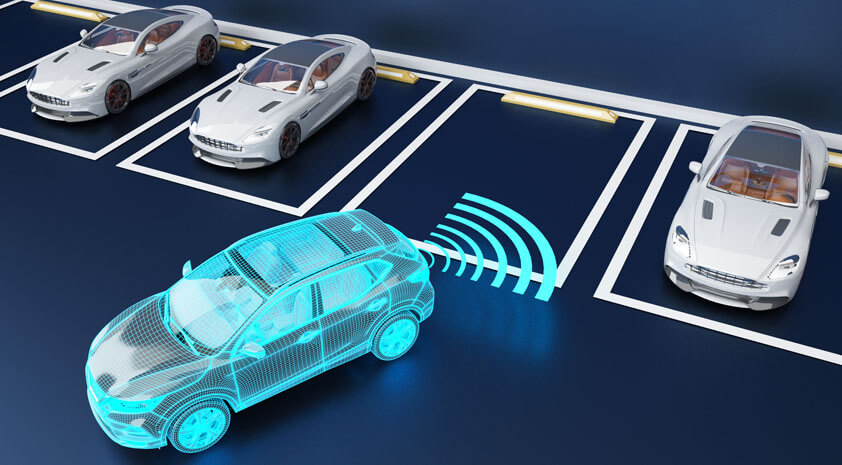
The Benefits of Parking Assistance
Parking assistance systems offer several benefits for Australian drivers. They can significantly simplify parking maneuvers, especially in tight spaces or busy parking lots. By providing a better view of your surroundings and alerting you to potential obstacles, these systems can help prevent parking-related accidents and scratches on your car or others. This not only reduces stress but also saves time and money on potential repairs.
Australian Cars with Top-Notch Parking Assistance Features:
Many car models in Australia are now equipped with advanced parking assistance systems. Here are a few examples:
- Ford Focus: Offers Rear Cross Traffic Alert and Active Park Assist, making reversing out of parking spots and parallel parking a breeze.
- BMW X3: Features Parking Assistant Plus with Surround View, providing a 360-degree view of your surroundings and guiding you into even the tightest spots.
- Kia Sportage: Boasts Rear Cross-Traffic Alert and Rear Parking Sensors with Blind-Spot Collision Warning, offering a comprehensive parking assistance package for added safety and convenience.
6. Driver Attention Monitoring Systems
Driver Attention Monitoring Systems (DAMS) act as a watchful copilot on the road, constantly assessing your alertness and keeping you safe behind the wheel. Here’s how they work:
- Monitoring Techniques: DAMS utilize cameras or infrared sensors to track your facial features, particularly your eyes and head position. Some systems might also monitor steering wheel inputs to gauge alertness.
- Attention Assessment: By analyzing your eye movements, blinking patterns, and head orientation, the system can determine if your focus is drifting away from the road. Signs of drowsiness, fatigue, or distraction can be detected through these subtle changes.
- Alerts and Interventions: If the system detects a decline in attentiveness, it will trigger warnings to get you back on track. These might include visual alerts on the dashboard, audible beeps, or even vibrations in the steering wheel. In some advanced systems, the car might even gently nudge you back in your lane or automatically apply the brakes as a last resort.
How Driver Attention Monitoring Works
Driver Attention Monitoring (DAM) systems act as a watchful guardian against fatigue and distraction. These systems utilize cameras or sensors to monitor various aspects of driver behavior, such as eye movement, head position, and steering patterns. Suppose the system detects signs of drowsiness, inattention, or distraction (like looking down at your phone). In that case, it will trigger an audio or visual alert to warn you and encourage you to refocus on the road.

The Importance of Driver Awareness
DAM systems play a crucial role in promoting road safety by combating driver fatigue and distraction. Fatigue and inattention are major contributors to accidents, and DAM systems can help mitigate these risks. By providing timely warnings, DAM systems encourage drivers to stay alert and focused on the road, potentially preventing accidents and saving lives.
Australian Cars Equipped with Advanced Driver Attention Monitoring
Several car models in Australia are incorporating advanced DAM systems. Here are a few examples:
- Tesla Model 3: Features Driver Attention Monitoring that utilizes the car’s camera to track driver alertness and provides visual and audio warnings if fatigue is detected.
- Volvo XC60: Offers Driver Alert Control that monitors steering inputs and provides an alert if the system detects signs of driver inattentiveness or drowsiness.
- Subaru Outback: Includes Driver Monitoring System with Lane Departure Warning, combining attention monitoring with lane departure alerts for a comprehensive safety package.
These are just a few of the many driver-assistance systems available in Australia. As technology continues to evolve, we can expect even more advanced features to emerge, further enhancing safety, convenience, and the overall driving experience on Australian roads.
7. Heads-Up Display (HUD)
A Heads-Up Display (HUD) is a transparent display that projects information directly onto your field of view, typically onto the windshield of a car. Imagine having crucial driving information like speed, navigation, or even incoming calls displayed directly in your line of sight, eliminating the need to look down at traditional dashboards or instrument clusters. Here’s a breakdown of how HUDs work:
- Projection Technology: There are different ways to project information onto the windshield. Some systems use a special transparent material that reflects light from a projector unit positioned within the dashboard. Other HUDs might employ mirrors or even holographic lenses to create the illusion of a floating image.
- Benefits: The key advantage of a HUD is keeping your eyes focused on the road ahead. By displaying important information within your natural line of sight, HUDs minimize distractions and reaction times, promoting safer driving.
- Information Displayed: The type of information displayed on a HUD can vary depending on the system. Common features include speed, navigation turn-by-turn directions, blind-spot warnings, and even incoming call notifications.
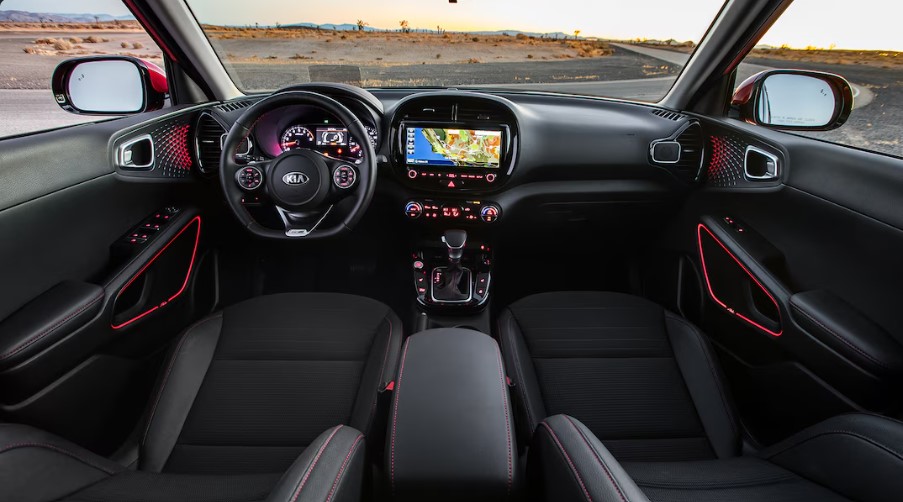
Functionality and Benefits of HUD Systems
Imagine having vital driving information displayed directly on your windshield, eliminating the need to take your eyes off the road. This is the magic of Heads-Up Display (HUD) systems. HUD projects essential information like speed, navigation instructions, and even lane departure warnings directly onto the windshield within your line of sight. This allows you to access critical information without glancing down at the instrument cluster, keeping your focus firmly on the road ahead.
The Power of Transparent Information
HUD systems offer significant benefits for Australian drivers. By displaying key information directly on the windshield, they minimize the need to take your eyes off the road to check the instrument cluster. This reduces distraction, a major cause of accidents, and allows you to maintain focus on the driving environment. Additionally, HUD systems can improve reaction time by presenting vital information within your immediate field of view.
Australian Cars with Cutting-Edge HUD Technology
A growing number of Australian car models are incorporating advanced HUD systems. Here are a few examples:
- Mazda3: Features a Head-Up Display that projects information like speed, navigation, and safety warnings directly onto the windshield, minimising distractions.
- BMW 5 Series: Offers a full-colour Head-Up Display that displays a wide range of information, including speed limits, traffic signs, and even turn-by-turn navigation instructions.
- Land Rover Defender: Boasts a configurable Head-Up Display that allows drivers to personalize the information displayed, further enhancing focus and convenience.
The Road Ahead: The Future of Driver-Assistance Systems
The future of driver-assistance systems is bright. As technology continues to advance, we can expect even more sophisticated features to emerge, potentially leading to the development of semi-autonomous and fully autonomous vehicles. These advancements promise to revolutionise transportation, making roads safer and more efficient for everyone.
Experience the Future of Driving with Alpha Car Hire
Looking to explore the beauty of Australia behind the wheel of a car equipped with the latest driver-assistance systems? Look no further than Alpha Car Hire! We offer a wide selection of top-of-the-line rental cars featuring cutting-edge ADAS technologies.
Visit our website to browse our fleet and book your rental online.
Drive with confidence and experience the future of driving with Alpha Car Hire!


